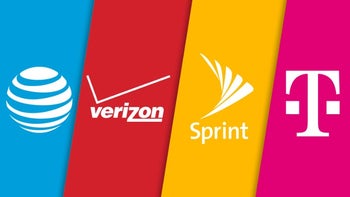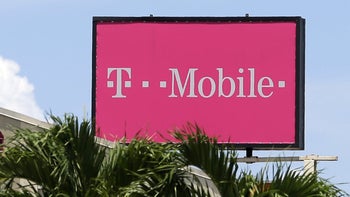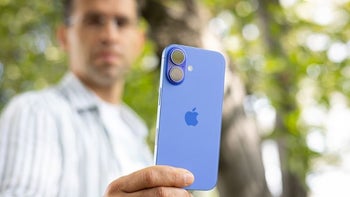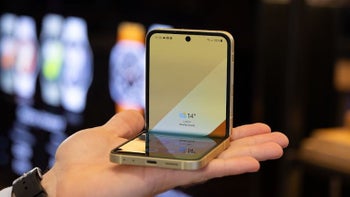12 devices that shaped the history of Android and its major releases

Officially launched by Google earlier this month, 5.0 Lollipop is the eleventh major version of Android - and, as expected, it’s making its debut on Nexus devices first. But things weren’t always like this: not all major Android builds were introduced alongside a Nexus, and that’s because Android had publicly existed many months before the introduction of the first Nexus product.
Lollipop is definitely one of the most important Android releases ever, and its launch is a good occasion for us to take a look at all the devices that helped Android become what it is today - by being the first ones to come with a major release of the OS out of the box. Join us below for a trip down the memory lane, will you?
T-Mobile G1 / HTC Dream (Android 1.0)
2009 brought us not just Android 1.5 Cupcake, but also a brand new device to use it out of the box: the HTC Magic / T-Mobile MyTouch 3G. Released in Europe in April 2009, then in Asia (May), and in the US (July), the Magic was the first touchscreen-only Android smartphone, ditching the QWERTY keyboard, but keeping the chin and the 3.2-inch HVGA screen of the G1.
Motorola Devour (Android 1.6 Donut)
While the first smartphone to come with Android 1.6 Donut from day one was introduced in 2010, by that time we already had a handset that ran Android 2.0 Éclair: the original Motorola Droid - launched by Verizon in November 2009 in the US, and known as the Motorola Milestone in other markets. Verizon and Motorola released the Droid as an iPhone alternative, helped by a Droid Does marketing campaign (which pointed out the things that the iPhone could not do). The Droid / Milestone was a pretty large smartphone for its time, sporting a 3.7-inch display with 480 x 854 pixels, and a slide-out QWERTY keyboard.
Motorola Droid 2 (Android 2.2 Froyo)
The Droid 2 was introduced in August 2010 as the successor to the original Motorola Droid. It was the first to come preloaded with Android Froyo. When the Droid 2 hit shelves across the US, Google had already released the Nexus One (this, however, ran Android 2.1 Éclair at launch).
Google Nexus S (Android 2.3 Gingerbread)
Later in 2010 (in December), Google launched the Samsung-made Nexus S, which became the world’s first Android 2.3 Gingerbread handset. It was also the fist smartphone made by Google in collaboration with Samsung, being based on the original Samsung Galaxy S.
Motorola Xoom (Android 3.x Honeycomb)
It’s safe to say that Android Honeycomb was a failed experiment - because it was launched by Google as a tablet-only version of Android (in February 2011). Honeycomb debuted on the Motorola Xoom slate - which was pretty well received by customers, and, thankfully, was eventually updated to Ice Cream Sandwich.
Galaxy Nexus (Android 4.0 Ice Cream Sandwich)
Succeeding the Nexus S, the Galaxy Nexus was the second handset made by Samsung for Google, and the first in the Nexus series to sport a 720 x 1280 pixels display (4.7 inches, Super AMOLED). Obviously, the Galaxy Nexus was also the first to run Android Ice Cream Sandwich, being released in November 2011.
Google Nexus 7 (Android 4.1 Jelly Bean)
After ICS, Google worked harder to enhance the Android experience on both smartphones, and tablets. Thus, Android 4.1 Jelly Bean was born, debuting on the Asus-made Google Nexus 7, the very first tablet in the Nexus series. Available since July 2012, the Nexus 7 was affordable (prices starting at $199), and yet it offered a lot of nice features, like an 800 x 1280 pixels IPS display, and a quad-core Nvidia Tegra 3 processor.
Google Nexus 5 (Android 4.4 KitKat)
Introduced at the end of October 2013, the Nexus 5 is the second Nexus smartphone made by LG - after the Nexus 4 (which, by the way, was released in November 2012 running Android 4.2 Jelly Bean). Like the Nexus 7 and Nexus 4, the Google Nexus 5 offers high-end specs at an affordable price, still being a great option if you're in need of a speedy handset.
Google Nexus 6 and Google Nexus 9 (Android 5.0 Lollipop)
Finally, here we are in October 2014, when Android 5.0 Lollipop is already out - though, at the moment, only for the Nexus 5 and Nexus 7. The first devices to run Lollipop out of the box are the HTC-made Nexus 9 tablet and the Motorola-made Nexus 6 smartphone. Both pack high-end features, and this time Google decided to ask premium prices for them: the Nexus 6 costs $649 / $699, while the Nexus 9 costs $399 / $479. Both new Nexus devices will be released on November 3.
T-Mobile G1 / HTC Dream (Android 1.0)
The T-Mobile G1, also known as HTC Dream, is the world’s first commercially available Android device. Initially launched in October 2008 in the US, the smartphone reached other markets in the following months. Compared to how many Android users are out there today, only few people have bought the G1 / Dream. Even so, this was a great handset for its time - when Symbian was still the indisputable leader of the smartphone market, and the iPhone was at its second version (and the first to have 3G connectivity). At launch, the G1 ran Android 1.0, which, unlike most of the Android releases that followed, did not have a confectionery-themed name. The smartphone has a distinctive deign, with a slide-out QWERTY keyboard, a 3.2 inch HVGA (320 x 480 pixels) display, and a chin that houses hardware buttons.
HTC Magic / T-Mobile MyTouch 3G (Android 1.5 Cupcake)
HTC Magic / T-Mobile MyTouch 3G (Android 1.5 Cupcake)
2009 brought us not just Android 1.5 Cupcake, but also a brand new device to use it out of the box: the HTC Magic / T-Mobile MyTouch 3G. Released in Europe in April 2009, then in Asia (May), and in the US (July), the Magic was the first touchscreen-only Android smartphone, ditching the QWERTY keyboard, but keeping the chin and the 3.2-inch HVGA screen of the G1.
Motorola Devour (Android 1.6 Donut)
Android 1.6 Donut was a rather weird update, because it was quickly overshadowed by Android Éclair. Donut was released in September 2009, only one month before Éclair. That’s why there weren’t many handsets to run Donut out of the box. The first one was the Motorola Devour, a QWERTY slider launched by Verizon Wireless in the first quarter of 2010.
Motorola Droid / Milestone (Android 2.0 Éclair)
While the first smartphone to come with Android 1.6 Donut from day one was introduced in 2010, by that time we already had a handset that ran Android 2.0 Éclair: the original Motorola Droid - launched by Verizon in November 2009 in the US, and known as the Motorola Milestone in other markets. Verizon and Motorola released the Droid as an iPhone alternative, helped by a Droid Does marketing campaign (which pointed out the things that the iPhone could not do). The Droid / Milestone was a pretty large smartphone for its time, sporting a 3.7-inch display with 480 x 854 pixels, and a slide-out QWERTY keyboard.
Motorola Droid 2 (Android 2.2 Froyo)
The Droid 2 was introduced in August 2010 as the successor to the original Motorola Droid. It was the first to come preloaded with Android Froyo. When the Droid 2 hit shelves across the US, Google had already released the Nexus One (this, however, ran Android 2.1 Éclair at launch).
Google Nexus S (Android 2.3 Gingerbread)
Later in 2010 (in December), Google launched the Samsung-made Nexus S, which became the world’s first Android 2.3 Gingerbread handset. It was also the fist smartphone made by Google in collaboration with Samsung, being based on the original Samsung Galaxy S.
Motorola Xoom (Android 3.x Honeycomb)
It’s safe to say that Android Honeycomb was a failed experiment - because it was launched by Google as a tablet-only version of Android (in February 2011). Honeycomb debuted on the Motorola Xoom slate - which was pretty well received by customers, and, thankfully, was eventually updated to Ice Cream Sandwich.
Galaxy Nexus (Android 4.0 Ice Cream Sandwich)
Succeeding the Nexus S, the Galaxy Nexus was the second handset made by Samsung for Google, and the first in the Nexus series to sport a 720 x 1280 pixels display (4.7 inches, Super AMOLED). Obviously, the Galaxy Nexus was also the first to run Android Ice Cream Sandwich, being released in November 2011.
Google Nexus 7 (Android 4.1 Jelly Bean)
After ICS, Google worked harder to enhance the Android experience on both smartphones, and tablets. Thus, Android 4.1 Jelly Bean was born, debuting on the Asus-made Google Nexus 7, the very first tablet in the Nexus series. Available since July 2012, the Nexus 7 was affordable (prices starting at $199), and yet it offered a lot of nice features, like an 800 x 1280 pixels IPS display, and a quad-core Nvidia Tegra 3 processor.
Google Nexus 5 (Android 4.4 KitKat)
Introduced at the end of October 2013, the Nexus 5 is the second Nexus smartphone made by LG - after the Nexus 4 (which, by the way, was released in November 2012 running Android 4.2 Jelly Bean). Like the Nexus 7 and Nexus 4, the Google Nexus 5 offers high-end specs at an affordable price, still being a great option if you're in need of a speedy handset.
Google Nexus 6 and Google Nexus 9 (Android 5.0 Lollipop)
Finally, here we are in October 2014, when Android 5.0 Lollipop is already out - though, at the moment, only for the Nexus 5 and Nexus 7. The first devices to run Lollipop out of the box are the HTC-made Nexus 9 tablet and the Motorola-made Nexus 6 smartphone. Both pack high-end features, and this time Google decided to ask premium prices for them: the Nexus 6 costs $649 / $699, while the Nexus 9 costs $399 / $479. Both new Nexus devices will be released on November 3.









Things that are NOT allowed: